#fear street 1994 out of context
Text
My Week(s) in Reviews: October 21, 2023
It's been a while... Here's what I've been watching.
The Wonderful Story of Henry Sugar (Wes Anderson, 2023)
The Swan (Wes Anderson, 2023)
The Rat Catcher (Wes Anderson, 2023)
Poison (Wes Anderson, 2023)




I dropped the ball and didn't get around to reading Roald Dahl's stories before watching these, but it was hard enough waiting for all four to release on Netflix, so I definitely wouldn't be able to wait to get my hands on the stories.
From my understanding of the source material, though, these are all perfectly peculiar adaptations, staying true to Dahl's voice and heart. All four short films shine unique light on Wes Anderson's strengths as a filmmaker and storyteller, and it was a pleasure to witness. The Rat Catcher is very likely my favorite of the bunch, with a bizarre story and characters, including an award-worthy turn by the always fantastic Ralph Fiennes. Second best would easily be The Wonderful Story of Henry Sugar, which highlights Anderson's knack for idiosyncratic storytelling, grabbing hold of the viewer and honoring the source material by keeping it intact. Poison was an experiment in suspense, and both Anderson and the cast delivered completely. I definitely wouldn't mind seeing him venture into more tense material in the future. And, despite the jaw-dropping performance from Rupert Friend, The Swan was probably my least favorite, over-utilizing its narrator storytelling to the point where I felt detached from the story.
There's just so much to love throughout the four of these shorts, though. Unsurprisingly, the production design in all four is brilliant, and I especially loved how interactive Anderson & Co. got with it all, here. The stagehands and creative handling of props stoked the imagination. Robert D. Yeoman's (and even Roman Coppola's) cinematography was singularly stunning. And the cast was pure perfection. The aforementioned stand-outs are only the beginning; everyone here was working at the top of their game. I know they're shorts, but don't be surprised if you see Fiennes and Friend - as well as Dev Patel and Ben Kingsley - popping up in My Best of 2023 lists.
I really wish I could've experienced these in a cinema, but when it comes to Wes Anderson, I'll take whatever I can get, whenever and however I can get it.
The Wonderful Story of Henry Sugar: 9/10
The Swan: 7.5/10
The Rat Catcher: 8.5/10
Poison: 8/10
Totally Killer (Nahnatchka Khan, 2023)

The overreactions to the way the teens in the '80s behaved got annoying real fast and shone a horribly unflattering light on just how disinterested people of her character's generation are with taking context into consideration when spouting their attention-hungry pontifications. Then again, that's probably the point? So, good job? The cast was okay. The kills were dull. The horror wasn't scary. The comedy wasn't all that funny. The writing in general is lazily paper-thin, and the stakes damn-near nonexistent. - 3/10
The Creator (Gareth Edwards, 2023)

I gets some extra points for being an 'original' sci-fi film in a landscape of sequels, reboots and additions to the MCU, but sadly those wind up being pretty much the only points it ends up with. Despite being 'original', every single aspect of this film feels like a tired rendition of a significantly better film. And worst of all, it's all just completely forgettable... I literally forgot Allison Janney until checking IMDb, just now. Sturgill Simpson was a standout, though. I look forward to seeing him again in Killers of the Flower Moon, this week. - 4/10
Fear Street: Part One - 1994 (Leigh Janiak, 2021)
Fear Street: Part Two - 1978 (Leigh Janiak, 2021)
Fear Street: Part Three - 1666 (Leigh Janiak, 2021)
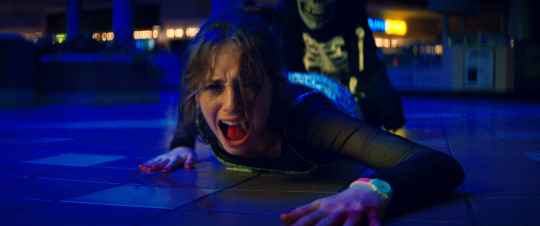


They function a little too much as more a limited series than even a trilogy, so they lose some points for that. However, all three are quite good. The best is the first, of course, working the most as a standalone. It also has the best kills and characters, and a tone that most successfully mines the scares out of the material. The second has a good setting, but the extremes of the characters detract from the tone. And while the third works best in its back half, when it completes the storyline set up in the first film, the 1666 section is enjoyable enough in its depiction of just how absurd the 1600s puritan belief system was.
1994: 8.5/10
1978: 7/10
1666: 7.5/10
Enjoy!
-Timothy Patrick Boyer.
#film#the creator#the wonderful story of henry sugar#fear street 1666#fear street 1978#fear street 1994#fear street trilogy#movies#my week in reviews#movie#cinema#film review#movie reviews#wes anderson#horror movies#etc.
7 notes
·
View notes
Text
Bracket F Round 1
Poll 30
Vix (@awakeindeath) vs. Ophelia Rowan (@apolemiasiphonophore)
379. Vix (@awakeindeath)
She/her
They may be relatively new to my mind, but they are a resilient thief in a sci fantasy adventure story I'm publishing over in Kindle vella (the Dark Heart by j peterson). She's smart, funny, and definitely in over her head with space pirates and robot gangsters around every corner.
She may also be dating her new gnoll gf and hasn't really come to terms with a relationship based on adrenaline yet.
She's short, with blue hair and bright eyes. She dresses in old clothes, all that she could afford. Everything on her is old and worn, except her blaster, which everyone thinks is too big for her. She disagrees, of course. She's thin from growing up on the streets, strong from climbing into buildings she doesn't belong in, and moves in darting motions like a mouse.
380. Ophelia Rowan (@apolemiasiphonophore)
he/she
i'm not good at trying to talk about my characters like this so i've mostly written her backstory, which got kinda long. whoops!! here's some quick points of interest though, if you don't wanna read all that:
-HUBRIS
-he's an astronaut!
-experiences....ominous visions....
-most of his writing takes place when he's 31 and older
-gay divorced. maybe not legally, but emotionally. who likes divorce here raise your hand please
-where's your rage??? where's your fucking rage????
-SEINFELD CHARACTER I MOST ASSOCIATE WITH HIM: george costanza. they are actually very very different in personality, but often i find when i see lines from him posted out of context on tumblr, it becomes very easy to insert ophelia. sorry.
-TMA FEAR IDEAS FOR HIM, IF YOU'RE INTO THAT SORT OF THING: the stranger? the spiral?? the vast??? there's lots of options! you could probably even argue the hunt at a certain point, if you want!
-i like him :)
ophelia has a LOT to prove, especially to herself. her story begins in the distant, futuristic year of 1994. ophelia was left alone for over a year on a failing space station orbiting a dying star, fighting for her life to live to see a rescue party. she saved the lives of her crewmates, who had all entered cryosleep to conserve resources--but ophelia herself didn't technically survive. the rescue party found her dead near the destroyed life support system.
but after freezing her and taking her back to earth, ophelia is revived! yippeee!!! when she's asked about the life support system, all she remembers is having a near-death hallucination about the sun speaking to her, telling her they can both make it out of this alive. weird... :/ oh well that probably doesn't mean anything it's fine. life is far from simple for her back on earth, though. she discovers she's become a sort of celebrity--when the news broke that a rescue party was needed, all eyes on earth turned to her plight.
now that she's recovering on earth, ophelia has to face the strange perceptions that developed of her. her traumatic experience has been turned into a point of debate about space travel, conspiracies about the company she works for, picking apart the "political" aspects of who she is over what she's accomplished--even a movie for entertainment purposes, with a shocking, tragic ending depicting her death. ophelia doesn't like these perceptions of her, not one bit. who is this ultra-feminine woman, sobbing over the cryosleep pod of some random man they made up for movie plot purposes? is this supposed to make her more relatable, easier to SELL as an image? what's this fascination with seeing her weakened, traumatized, and desperate for human contact??
ten years fly by as ophelia reconnects to life on earth. her image has largely been forgotten and discarded; sometimes, she might talk about safety at space camps for kids or at space tech companies, but usually, she's left to her own devices. that is, until she's approached by celebrity billionaire preston young, ceo of a tech company with a shaky reputation. she has no respect for him and might ordinarily walk away, but her interest is piqued when he tells her he can offer her EXACTLY what she's wanted all these years: a second chance to prove herself. legality be damned, she can go on a real, genuine solo mission into space--but at what cost? what does preston want to accomplish, and how much will ophelia let slide for her own interests? well you can't find out because i'm not done writing yet. i hope you like her though! :)
ophelia is a white...woman-ish...person, and is relatively short and fat. under ideal circumstances, he'll normally be pretty muscular, too, and prefers to keep his hair very short--sometimes he buzzes it all off completely, but other times, he'll grow it out just a tad and shave one side. his hair is a relatively light brown with a wavy texture. he can grow a very light and patchy amount of facial hair, too, and very easily forgets to shave.


14 notes
·
View notes
Note
about your fear street au !! give me random out of context screenshot from your outline (assuming you have one) or/and an out of context spoiler !!
HIIIIIIIIIIIIIIIIII omg thank you for the ask!
JKSDJDJK I DONT ACTUALLY HAVE AN OUTLINE i just said fuck it we ball but it is almost word-for-word with fear street 1994 so the movie is kind of? my outline! but here's a couple of my comments which i use as reminders. i am so done with myself.
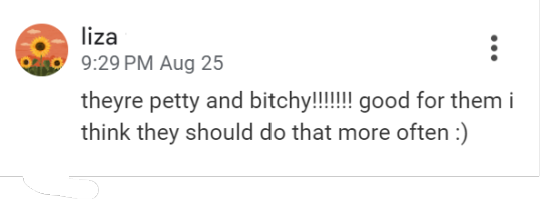


and thank you for asking for a snippet! sharing a snippet is literally one of my favorite things ever!! even though this one isnt the Greatest but it is Maybe a flashback and Maybe from the climax. Maybe. hehehehe

ive had so much fun incorporating byler canon scenes into the fear street!byler timeline >:) anyway! i will also be doing a miwip wednesday later, too, to prove that the fic for taeiris IS being written! very slowly! but written! <3
anyway arian thank you so much for the ask!!! sorry it took so long i spent ages trying to find a good snippet lol!!!!!!
1 note
·
View note
Photo

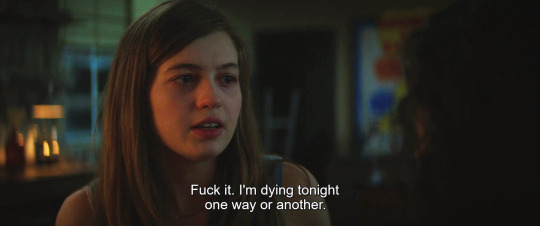
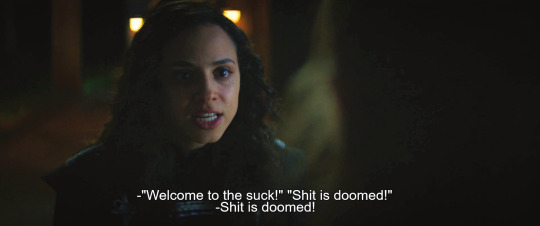







FEAR STREET PART ONE 1994 (2021): out of context edition
DIRECTED BY LEIGH JANIAK
simon had no business being that funny.
#fear street#fear street 1994#out of context#fear street out of context#fear street 1994 out of context#deena johnson#sam fraser#samantha fraser#kate schmidt#simon kalivoda#leigh janiak#kiana madeira#olivia scott welch#julia rehwald#fred hechinger#funny to me#scenes#lines#screencaps#screenshots#stills#edited#fear street trilogy
985 notes
·
View notes
Text


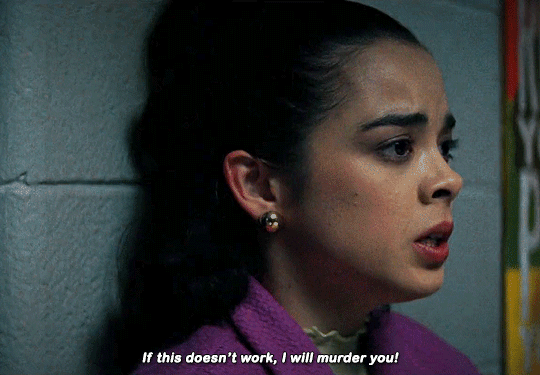
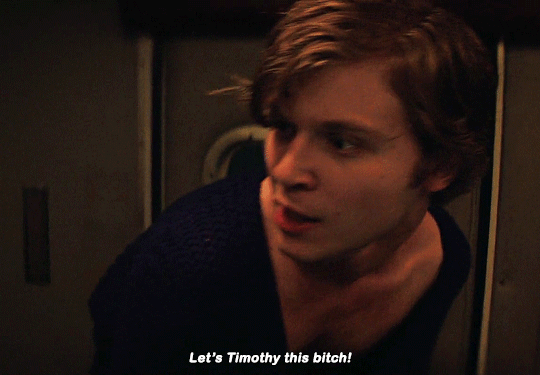

Out of context Fear Street 1994
Bonus:
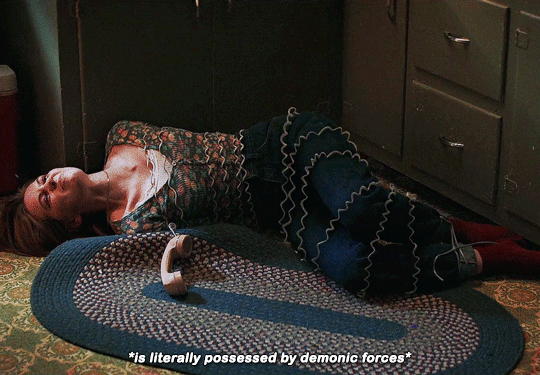
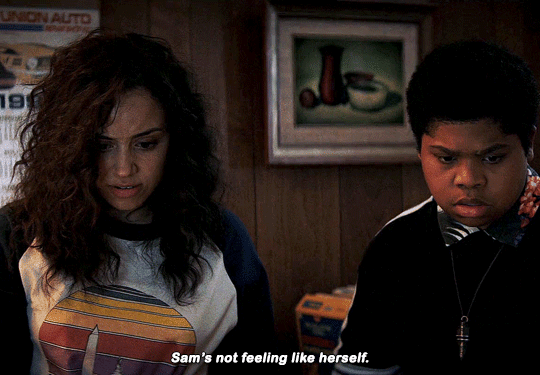
#fearstreetedit#deena x sam#horroredit#filmedit#userstream#cinematv#dailynetflix#fear street#deena johnson#sam fraser#josh johnson#kate schmidt#simon kalivoda#fear street 1994#gif request#myedit#top post
3K notes
·
View notes
Text
Prostitution: A Word That UN Women Does Not Want to Hear
by Barbara Crossette
https://www.passblue.com/2015/03/31/prostitution-a-word-that-un-women-does-not-want-to-hear/
On the eve of a speech Ruchira Gupta was to give on International Women’s Day in New York as the recipient of a Woman of Distinction award, she got a strange email. Gupta, who has collected numerous awards for her work against sex slavery in India — including an Emmy for her 1996 documentary, “The Selling of Innocents” — was asked in the message not to speak on prostitution “or put UN Women on the spot.”
The email came from the organization that had chosen Gupta for its highest award, the NGO Committee on the Status of Women, NY (NGO CSW/NY), which supports the work of UN Women and the United Nations Commission on the Status of Women, whose annual session was about to begin on March 9. The NGO Committee had itself used the word prostitution in its announcement of the award in January.
“I was surprised that the UN was trying to censor an NGO, and that they should tell me not to speak on prostitution, when my work was with victims of prostitution,” Gupta said in an email interview to PassBlue. She is the founder of Apne Aap (meaning “self empowerment” in Hindi), a multifaceted support group for women trafficked into sex slavery in Mumbai and other South Asian cities. Apne Aap now has international reach.
In her speech at New York’s iconic Apollo Theater, where UN Women’s executive director, Phumzile Mlambo-Ngcuka of South Africa, was also on the program, Gupta ignored the request and chose to speak forcefully “to represent the voices of victims and survivors of prostitution” in her own organization and others around the world. In late 2013, UN Women, in a note on the issue of terminology, had said it would use the terms “sex work” and “sex workers” and “recognize the right of all sex workers to choose their work or leave it and to have access to other employment opportunities.”
UN Women’s decision and recommendation not to “conflate sex work, sexual exploitation and trafficking” sounds outrageous if not ludicrous to people like Gupta, who work in the squalid brothel quarters of Mumbai, Delhi, Kolkata and other cities, to which young girls from around South Asia are lured by traffickers — or sold by poor families — into a life of miserable bondage, with no chance to make choices. In her speech on International Women’s Day on March 8, Gupta said the youngest girl trafficked into bonded labor she has met was just 7 years old.
“The pimps would hand over these little girls to the brothel keepers . . . and these girls were locked up for the next five years,” she said. “Raped repeatedly by eight or ten customers every night.” By their 20s, Gupta said, their youth is gone and bodies are broken, and they are “thrown out on the sidewalk to die a very difficult death because they were no longer commercially viable.”
In January 2014, 61 South Asian victims and survivors of prostitution as well as women’s groups representing communities marginalized by caste, class and ethnicity and antitrafficking organizations helping girls and women “trapped in bonded labour and other forms of servitude” wrote to Mlambo-Ngcuka to protest the new UN Women policy of avoiding the word prostitution.
“We do not want to be called ‘sex workers’ but prostituted women and children, as we can never accept our exploitation as ‘work,’ ” the letter signers wrote. “We think that the attempts in UN documents to call us ‘sex workers’ legitimizes violence against women, especially women of discriminated caste, poor men and women and women and men from minority groups, who are the majority of the prostituted.”
They are still awaiting an answer from UN Women, Gupta said.
Censoring comment about violence against girls and women is not new in the Commission on the Status of Women or in the UN more broadly. Nafis Sadik, the outspoken executive director of the United Nations Population Fund, or UNFPA, from 1987 to 2000, said in an interview in 2013 that there had been numerous attempts to silence her, often from pressure by governments.
Sadik was told at a session of the commission several years ago, for example, not to relate a story from Zimbabwe to illustrate the hazards women face when trying to use contraception. “This man’s wife wasn’t getting pregnant, and apparently he discovered that she was taking pills,” she said. “And he killed her because she made him look embarrassed [in front of other men]. Furthermore, that defense was being accepted in the court: that you can’t humiliate the husband.”
Groups working with victims of sexual slavery in developing countries often see a widening gap between Western women — particularly “academic feminists,” in Gupta’s view — and the women working to help the most exploited girls at street level in some of the world’s most dangerous slums, where pimps and brothel owners may be not only slave masters but also killers. Gupta had a knife held to her neck on one occasion when she was filming her award-winning documentary. Women rushed to surround her, separating her from her would-be attacker, and saved her life.
The women working with victims and survivors of sex trafficking and bonded prostitution who signed the letter to UN Women fear that campaigns in richer nations, almost all of them in North America and northern Europe, will lead to more moves to decriminalize pimps and brothel keepers — making not only sex workers but all aspects of the sex industry legal.
This is not the only issue that has opened fissures between the richer, progressive nations or societies where women construct views of social change based on their own advanced social and legal environment or well-intentioned views of developing nations’ cultures. They do not always reflect what most poor women — the majority of women in the world — who lack power over their lives really need and want.
Twenty years ago, many Western feminists and officials in countries of the global North dealing with international aid programs criticized campaigners against female genital mutilation or child marriage in developing nations, excusing these harmful practices as “part of their culture.” There are still affluent women who have enjoyed the liberating benefits of contraception for decades who argue against promoting family planning in the developing world, believing that women want to have as many children as possible — sons in particular — because their social status or the family’s economy may depend on fertility.
Global Connection Television - The only talk show of its kind in the world
Such condescending Western attitudes began to change, sometimes dramatically, after the transformative International Conference on Population and Development in Cairo in 1994 and the Fourth World Conference on Women in Beijing in 1995, an event that Gupta says has inspired her work ever since. Women in distant lands are now being heard and taking the lead on issues close to home.
Gupta and her like-minded colleagues who signed the letter to UN Women were asking to be part of the discussion on prostitution — in a global context.
380 notes
·
View notes
Text
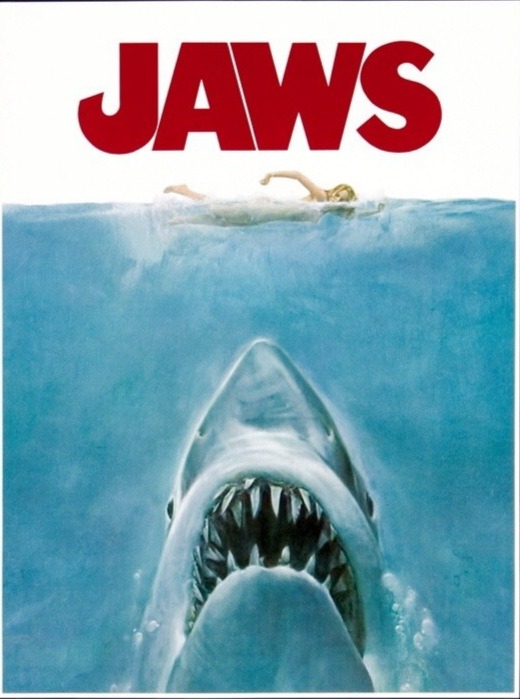



out of context Fear Street 1994 spoilers
268 notes
·
View notes
Text
So I watched—and loved—Fear Street on Netflix. It’s fun, it’s scary, it’s very well directed, impressively shot, and delightfully queer. I’m also really excited to see where it goes next, since it is a trilogy of films that are APPARENTLY COMING OUT ONE AFTER THE OTHER IM BEING FED VERY WELL
Um…
Ahem…so anyways…I’m super stoked to foray into the 70s for the obviously Friday The 13th homaging next installment. But I as I’m wont to do, I have thoughts, I have theories, I have several analyses bursting out of my brain for zombies to eat.
And so without further ado; here’s my Fear Street theory (and yes, all of the spoilers apply):

So…yeah.
Sara Fiers is not the villain. She most definitely is not.
That’s pretty unlikely given the intensely unsubtle foreshadowing in the opening credits ALONE.
No…the witch isn’t the villain at all.
Sunnyvale is.
It’s particularly interesting to me how much the high key in your face opening credits establish very clearly the dichotomy between Shadyside and Sunnyvale; one town full of murder, mayhem, and misfortune, the other prosperous, picturesque, and peaceful. It’s the difference between Killer Central USA and The Sunniest Place On Earth. And that, in my opinion, is—forgive the pun—shady as all hells.
In fact, it’s so very much and exceedingly reeking with suspicion…
It’s stated extremely plainly throughout the film how Shadyside has continuously descended into a pit of death and suffering as the years pass by, while Sunnyvale remains rich and pleasant and as safe as can be. That cannot be a coincidence—especially in a horror movie, a genre where almost nothing is ever coincidental.
And if Buffy the Vampire Slayer has taught me anything at all, it’s that supposedly idyllic towns that market themselves as “sunny” are never ever to be trusted at all costs.
Ever. Never ever ever.
The main reason I find Sunnyvale sus is pretty obvious, however: if they weren’t, why even mention the difference in the towns’ wealth and safety? Why bring up that conflict? Why even have two towns in the first place? What would be the point if there’s no relation? Sunnyvale’s entire existence within the story, and their relative prosperity in comparison to Shadyside, seems very much like a clue that they’re involved in some freaky deaky dealings and possible black magic. They wouldn’t bring up these details if they weren’t gonna matter in the long run; you don’t spend that much time and effort just to set up a red herring.
Unless it’s just bad writing, which might be probable but seems unlikely for this specific property at least…
Another big indication comes in the witch’s supposed motivations…which don’t seem to exist beyond “muah ha ha murder” and “generic revenge” if we’re being completely honest here. But that flimsiness made me take a closer look into the visions Sam got after her blood seeped into Sara’s grave and as she got closer to death: a swarm of bees, red tinted almost like blood got splashed onto the camera, a girl screaming into the ether, an image of the Witch’s Mark, and who I presume to be Sara yelling “YOU! IT’S YOU!” over and over again. But when I look at that and put it in context with the motives the 1994 cast comes up with, there’s not much cohesion, is there?
Revenge as a motive wouldn’t explain why Heather was killed in the cold open. It also wouldn’t explain the weekly tragedies that befall Shadyside. If Sara wanted revenge on the town that tortured and killed her, why all the drama? Supposing she can possess the dead, why not just necromance an army of unkillable zombie monstrosities to raze the town in one go and get all over with? Why is this bitch out here doing the most? It doesn’t add up and it doesn’t make sense.
And if you take all that in tandem with the various tragedies of Shadyside—the ways people were murdered, the consistency of the massacres over the years, etc—it starts to paint an intriguing picture:
These deaths aren’t passion filled or emotive or generalized, they’re targeted (at those whose blood has mixed with the witch’s grave) and more importantly: they’re low key ritualistic. It screams of the classic sacrificial deaths and equivalent exchange. Sunnyvale’s peace and prosperity is very likely rooted in a demonic ritual that both feeds on the suffering of Shadyside as well as directly cause it as a sort of feedback, taking the brunt of the bad luck, poverty, and decay meant for Sunnyvale only heightened and magnified to insane degrees. It’s why so many deaths have happened over the years: it’s a clear method of perpetuating that state of perfect, suburban idyllia.
And honestly if this theory does turn out to be the case, it’d serve as an excellent metaphor for wealth inequality, possibly gentrification, and most definitely exploitation of the lower classes of the socioeconomic hierarchy by the upper crust elite WASP 1% so as to perpetuate the status quo of the rich getting richer and the poor getting poorer and continuing to suffer. That itself is kinda sorta already supported by the text of Fear Street too in that Sunnyvale is made up of mainly privileged white suburbanites who live in antebellum architecture style houses and manors blanketed by green grass and white picket fences whereas in contrast Shadyside is home to a clearly diverse and multiethnic population that is disenfranchised, poor, low in prospects, high in death and suffering, and living in relative squalor…
So imma leave that here and I hope y’all add your own theories and observations if you can and want to. I’d love to read them so please don’t hesitate to reblog with your additions and stuff!
108 notes
·
View notes
Text
alright I’ve decided Fear Street 1994 is a good example of queer horror because like. Okay spoilers ahead.
Honestly, for being a cheesy slasher movie based on a series of teen novels, this movie was surprisingly thoughtful and poignant? Obviously it couldn’t have a deep exploration of certain topics, but it managed to be pretty cool when it touched on them. I focused mainly on the queer aspect but there’s also quite a few things I liked when it came to depicting people of color, impacts of socioeconomic disadvantagement, and also cops being bastards.
Bury Your Gays doesn’t really happen here, IMO. Neither Sam nor Deena actually technically die or stay dead, and IMO it’s ambiguous whether Sam is actually dead at the end of the movie or if she’s just been possessed by the witch. I’m inclined to think she’s been possessed because she’s alive and fine until she hears Sarah Fier’s voice as she’s being possessed
And like, BYG is when the queer characters die for no real reason and it feels like they’re being punished for being queer. Their deaths don’t feel like they served or meant anything. That isn’t the case here—this ending felt like a classic slasher movie ending where it just happens the characters involved are queer. There’s nothing about it that suggests they got this ending as a punishment for being queer and in fact, they still don’t die! Deena survives the attack and manages to subdue Sam.
You could’ve made either one of them a guy, and the ending would’ve worked just the same. Honestly that’s why I think this whole movie manages to be good queer rep while still being horror, because there’s nothing in it that felt like it wouldn’t have happened in a movie about a straight couple.
I was literally sitting here thinking, “You could make one of them a guy, and 99% of the movie would still work.” And that 1% is a brief allusion they make to their relationship not being fully open because they’re lesbians. You could write those lines out and the rest of it still works 100%. But even that allusion kinda never really comes into play, because hiding the relationship isn’t a plot point. They’re not hiding from their friends, and their friends are totally cool and accepting, so it feels more like flavor and context for why they’re not on good terms at the beginning of the movie.
(Also they FULLY use the gender neutrality of Sam’s name to straight bait lmfao and I can ALWAYS get on board with that)
You wouldn’t even have to change the fact that Sam’s mom is probably meant to be homophobic, because even though that’s what I and probably most viewers assume based on the fact that her daughter is in a gay relationship and she clearly dislikes Deena...there’s never anything that solidly proves that she dislikes her for homophobic reasons. She never makes any statement that would be out of place in a story about a straight couple. A parent hating their teenager’s high school sweetheart because “they’re a bad influence” is a really common trope across all teen movie genres, so again, you could make Sam or Deena a guy and the interactions would not change one bit.
Sam and Deena also get a really nice story arc that feels like a typical horror movie romance, but the typicality is the point! Nothing really changes just because they’re gay! They’re really sweet together, they have typical teen drama, their friends are supportive, and they have SUCH a sweet moment together near the movie’s climax. You’ll know it when you see it. So it feels like they got to be fully fleshed out characters whose unhappy ending was due to the genre tropes, not due to homophobia.
So overall, I’m gonna say that this movie is not an example of Bury Your Gays because 99% of it would work and not be weird if it was a straight couple instead.
Other things I liked about this movie that aren’t queer but were great anyway:
I love how every character in this movie who isn’t a cop is all ACAB, even the rich white asshole characters who would probably be able to get the cops to side with them. Even though one of the cops is meant to be a “good cop,” he’s still shown as a cop with all the institutional bullshit that entails. And I feel the narrative acknowledges that. He’s sorta nice to the kids, but he’s still holding a black man in police custody that the audience knows to be innocent. They literally shot their main suspect dead at the scene and he’s still trying to pin the other crimes on the black janitor.
I love everything about Josh. I love that he doesn’t die and I was so afraid he would because the black characters almost always die in this kind of slasher movie. I love that he’s shown being a nerd onscreen (RPing a knight in AOL chat rooms and playing video games and using the Konami code as a self confidence booster) and I love that his interest in local true crime and the paranormal ends up being a big resource and he’s the one who comes up with the Pretty Good Plan to defeat the monsters (even if it doesn’t end up working because it’s a horror movie). I love that he gets to have an innocent teen boy crush on a girl and isn’t made uncharacteristically predatory in the moment where he’s alone with her, or punished for being attracted to her (yeah I know, she dies, but again, it comes off like a trope rather than a punishment for some kind of transgression—it wouldn’t be a slasher if half the main cast didn’t end up dead).
Brief but overt mentions of the socioeconomic disadvantages that some of the characters face. Two of the characters are drug dealers, yeah, but they’re also shown to be hard workers in school and legitimate work. One is class valedictorian, the other is employee of the month several months in a row. It’s apparent and also outright stated that the drug hustle is directly related to the fact that they’re disadvantaged and trying to get money for themselves so they can leave their shitty town for a better life. They’re not painted by the narrative as good for nothing junkies, they’re shown to be kids in bad circumstances trying to survive. They’re also selling prescription drugs which IMO suggests....idk, I’ve always seen prescription drug abuse be associated with upper economic classes, so whether that’s true or not, the implication is there. And their knowledge of how to induce an overdose ends up playing a plot important role even if the plan doesn’t work, so although the movie doesn’t condone what they’re doing, it also lets them have a moment where their illicitly gained knowledge has a positive aspect to it. Also both of them are white which, alongside Josh, is a refreshing change of pace in terms of how people are depicted. Obviously the same principles of “dealing to survive” apply to people of color, but I think it worked better this way because the average viewer might not pick up on that nuance. So I’m glad they went for stereotype breaking because this is a 107 minute movie about undead serial killers, not an Academy award winning drama.
#fear street#netflix fear street#fear street part 1: 1994#fear street spoilers#personal#erika's blog and bar
39 notes
·
View notes
Link
As the summer of the George Floyd uprising comes crashing into the chilling electoral politics in the winter of 2020, we face new dynamics and the challenges they present. The initial shock the pigs felt of a whole racial order flipped on its head; of entire swaths of the country losing their fear of the police, breaking out of quarantine, or out of frontline jobs, to wage a frontal assault against the carceral state, even if only for a few days in late May, is coalescing into a tightening of the repressive apparatus. The initial phases of counterinsurgency will be omnipresent; sewing confusion and conspiracy within the crowd; playing off white guilt and half-baked identity politics to nullify and police race lines among rebels in the streets. These classic tropes are waged to insidious effect by the State, by bad actors, and by those whose politics crumble against the grain of toxic critique; the acquiescing of liberalism back into itself; a state of listless deference to mild order against the threat of violence. We are now, however, entering a deeper stage, dovetailing with the election of a carceral democrat regime, which could invisibilize the coming storm of state repression.
As liberals celebrated the election of Biden/Harris, comrades in Atlanta and Philadelphia had their doors kicked in by agents of the State, their partners’ houses raided, phones and laptops seized, and now sit in cages. The NYPD announces the creation of an “anti-looting task force” and for a week straight, brutally squashes any attempt at protest in the city. This comes in the wake of 20k+ arrests in the US since the George Floyd uprising began in late May, an uprising in which dozens upon dozens upon dozens have been martyred by the police, in car attacks and by right wing terror. Countless people suffer lifelong injuries: permanent nerve damage in the hands, broken bones, eyes exploded by rubber bullets. We must not forget that many more have risked, or given their freedom for the most potent images which have sustained the uprising. Lessons the movement learned the hard way on good communication security and the dangers of photographers mean the threat of decades in prison for those unlucky enough to get caught. In New York City, the images of the paddy wagons on fire in Brooklyn and Manhattan translated into the possibility of 40+ year sentences for 2 young lawyers accused of throwing Molotovs. These are our revolutionaries, and they cannot be forgotten.
We cannot help but notice that the new presidential regime are the architects of the American fascist prison nightmare. The author of the 1994 crime bill and California’s “top-cop,” serving as a blue fantasy cure-all for the blood red murder of Trump’s 2016-2020 reign, will attempt to pacify the left and the right by invisibilizing and crushing our movements. In the face of this State terror we propose a call for revolutionary abolitionist anti-repression councils.
Our strength is in our undying solidarity with those in struggle, and this capacity to materially and emotionally support those facing incarceration will be the real terrain in which anti-racist and liberatory politics is forged. Those facing charges will be the looters, they will be mothers, they may be our lovers or our teachers. While the State will attempt to atomize those it holds in its grasp as individual criminals, the movement must be there to support them and demonstrate a lived commitment to a revolutionary ideas that builds and heals the wounds the State has inflicted on our communities. This may take different forms in different contexts and cities, but we have a rich framework to build from; there are Anarchist Black Cross (ABC) chapters in many cities, Certain Days, Jericho Movement, Books Through Bars projects and comrades with experience in bail funds have a tremendous amount to teach us.
As we go through different waves of exuberance and comedown from street actions, and for those of us who cannot risk arrest or physically participate, anti-repression work can serve as a healing space to do the slower work of rebuilding our communities and commitments to one another. It should serve as a model of mutual aid, in which driving people to visit friends and family behind bars, or when important, campaigning for and politicizing the trials of those facing the state, will allow us to learn from each other. This could be a meaningful beginning to breaking down the racial and class segregation that this country is built on and be an opening for revolutionary solidarity, building of trust and a demonstration of commitment to Black liberation and anti-racist politics by white comrades, who will undoubtedly be transformed by these experiences as well.
The anti-oppression and gender dynamics can be worked through in the act of doing these things together, and pre-figuative, abolitionist, revolutionary and even utopian dynamics could emerge from these social formations.
Let us turn the brutality of the US carceral state into the tool of its own destruction; Onward to Abolition!
Revolutionary Abolitionist Movement
215 notes
·
View notes
Note
I'm so curious, so originally in 1994 Nick's plan was just to have Ryan Torres attack the mall. So like I was thinking if that happened and then the rest of Fear Street didn't happen. He wouldn't have had a reason to contact Ziggy. Or do you think he still would have? Also like, what would have been the rest of his life plan? Since from my understanding you only need two names during your lifetime. Like I'm extra curious in the context of him not married or having kids. So like, I wonder how he would have tried to get back into Ziggy's life.
I think that he would have contacted her with the Ryan thing anyway. We're not sure on the requirements of the names, but they do seem to be tied with how much you ask from Satan, besides. But I've said before that I think the Pact/Satanic Magic was pushing him to make heirs and he couldn't resist it for that much longer, and was preying on his loneliness and missing Ziggy, so I do think that either way he was going to reach out to her soonish, and in fact might be using the Mall thing to boost the Satanic power around him to help it go smoother. I think he'd reached the end of his rope and was going to try again, perhaps for the last time, because he had no more choices. As to whether he would leverage the case in itself, because it was so similar to Nightwing, or would just go to her like "cards on the table, I think of you all the time and I miss you, come back" even though they weren't super a thing, that would have been tied to the impact he saw or if he felt she would see it that way. Which she would have, from what we see. Aw Nick. So smad.
10 notes
·
View notes
Text
Tag people you want to catch up with/get to know better!
I got tagged by @out-of-context-charlie ahhhh thank youuuu 🥰
Favorite Color: Orange! Whenever a quiz inevitably omits any option for orange in the “What’s Your Favorite Color?” section then I usually pick purple or red or black if those are available. They usually are. Why do y’all hate orange?
Last Song: ngl I’m listening to “Boyfriend” by Big Time Rush
Last Movie: Luca! It was soooooo sweet and good! And full of baby mlm! Nobody can prove me wrong and that means you Disney execs! NO WAIT I SAW “FEAR STREET 1994″ ON NETFLIX. SHIT. IT’S GOOD. IT’S DUMB LIKE THE BOOKS BUT IT’S GOOD AND THE MAIN CHARACTER IS A LESBIAN.
Last Show: Loki on Disney+ (yes, I didn’t start this show with any inclination for shipping - and yes, now I ship both Lokius and Sylki - and yes, we do exist)
Sweet, Sour, or Savory: hhhmmm,,,, probably sweet or savory
Craving: Validation. 100%. Gimme validation.
Tea or Coffee: Blueberry white tea would be good about now,,,
Current Projects: I,,,,,,,,,,,,,,,,,,,,,,, have so many deadlines and fests that I am involved in that it’s not even funny. I haven’t finished several chapter fics,,, I’m actively trying to not think about it like I’m gonna finish them just not this second,,,, listen I just do things because I can and I don’t talk about doing them. I just do them I just do them all and then you see like 3-7 fanfics posted by me in a day in your email. Idk why! Don’t question my process! I’m looking forward to finishing “Between Grief and High Delight” though. I love AshEiji so much. I wanted to get another chapter up in July but we will see.
I’m gonna tag @merlinsbed, @clotpolesonly, @asajjvxntress, @not-so-mundane-after-all-97, @justadiva, @onestrangenovelist
3 notes
·
View notes
Text
Harry Hood
It may be controversial within the Tumblr world to out myself as a Phish fan. But amongst the band’s tight-knit community, I’m not exactly ruffling any feathers when I say that one of my favorite Phish songs is “Harry Hood.”
For the uninitiated, here’s an excerpt from the song’s history page on phish.net:
“In 1985, Mike, Fish, Page and friend Brian “Miles” Long lived in a house on King Street in Burlington, directly across from a regional Hood bottling plant. The plant’s pair of huge milk tanks bore Harry’s smiling face, his grin illuminated at night by streetlight. “Harry Hood” was inspired by its namesake, the signature character of the Hood dairy company’s advertising campaigns. The little animated milkman in the fridge would proudly rattle on about his company’s dairy products when the “unsuspecting” folks opened their icebox doors. But what happened to Harry when the refrigerator door closed? Brian Long was the first to ask the question that has passed the lips of virtually every Phish fan. “Harry! Harry! Where do you go when the lights go out?”
When Trey and Fish traveled to Greece in the summer of ‘85, they experienced a tumultuous series of events involving a sea storm, a capsized raft, and lots of super-clean “chemists’ reserve” LSD. Following their return to safety, Trey wrote several chunks of new music inspired by the adventure. Back at the King Street house, a former tenant apparently named Mr. A. Miner was still receiving mail. One piece caught the band’s collective eye, a form letter bursting at the seams with Miner’s name, telling him, “Thank You, Mr. Miner.” It is from these relatively nondescript circumstances that one of Phish’s most beloved songs was born. “
Lyrically speaking, it’s not quite “Tears In Heaven” level, but that’s Phish for you. But in my first actual post on this blog, I want to discuss what this song means to me. And maybe on a beach in Greece thirty-five years ago, Trey was thinking the same thing. Probably not, but who knows.
As a child, I remember playing this game. Closing the refrigerator door, while trying to catch the precise moment that the light goes out. Can I do both? In my parents’ fridge at least, this task seemed impossible. In “Harry Hood”, Phish poses the question: what does happen to the contents of our refrigerator when the door closes and the lights go out - specifically to this beloved dairy mascot?
The song first “clicked” for me while I was running on my local track in a torrential downpour. During the song’s triumphant peak, I left my body. I wasn’t affected by rain or fatigue or stress. I was gliding. It was then that my love affair with the song took root.
This experience in a way provides a basis for my interpretation. Maybe it’s my penchant for attributing deeper meaning to the mundane (perhaps unnecessarily so at times) and maybe it’s my affinity for the “psychedelic” way of thinking and line of inquiry it entails, but I take the song as an analogy for life.
In the context of the song, we are all “fridges” with a bunch of stuff inside of us. Fears, dreams, anxieties, cravings. Relationships and friendships, family, material possessions. But what happens “when the lights go out” - when all of that goes away? What are we left with?
And Phish has the answer: “Harry!”
During one of the sittings at a recent meditation retreat, a cartoon figure emerged to help me through a particular rough patch. My brain - who has been fed a healthy dose of cartoons and television over the years - rationalized this abstract concept and gave it a familiar shape: Jiminy Cricket.
In Pinocchio, Jiminy serves as the titular character’s conscience. While that was also my initial interpretation at the time, I now understand it to represent something that is equally difficult to pronounce for me (hell, I even conflate the two when speaking - even if I can explain how they are fundamentally different): consciousness.
When you strip away everything, what are you left with? Buddhists say nothing, I say, “Yes, but not quite”. Sam Harris posits that you are left with “consciousness and its contents.” I like that. Better still, if you’re like me and want things broken down in easier to digest chunks, you might prefer Phish’s response.
Awareness or consciousness or Harry Hood is all that we have. Beneath every layer of being lies something at the center. Western religions and - to a lesser extent if you really understand its teachings - Hinduism confuse this with an eternal individual soul. But consciousness does not have any attributes. Emotions, feelings, experiences - everything just arises within it. Within this nothing, everything appears. And we are just witnesses to it.
This could be deeply troubling to some. We cling to who we are as a person - our preferences, our grudges, our “qualities”. But we are not any of these things. At our core, we are consciousness. We are awareness. God is consciousness. God is awareness. Or, if you prefer to be agnostic and don’t like to drop the big “G”, feel free to use the double “H” instead.
All of us are sometimes caught in a storm - whether it’s on a track or out at sea. We all have to face the vicissitudes of life. Conversely, we all have things to celebrate. And they can be equally as harmful when we cling helplessly to such positive memories and experiences.
Beneath it all, there is something more real. There is a peace and tranquility that can be attained in fleeting instances. Or in prolonged experiences like my meditation retreat. Or on a particularly scenic hike. While running in the rain. While watching one of your favorite bands in concert at the most famous arena in the world. While goofing off with friends at a college house. While driving through pine-covered mountains that stretch as far as the eye can see.
You aren’t your emotions. You aren’t your experiences. Hell, you aren’t even your self as you understand it. You are awareness. You are consciousness. Nothing more.
While this is destabilizing to some, I argue that this alternative is better. Because when you break it down, after all the food spoils and the lights go out, there is something that is still there. There’s something that lies beyond all that. And every blissful note in a delicious “Harry Hood” jam is a reminder to me of just that.
That cartoon milkman is always inside of us. He doesn’t go away when it gets dark. He is always there. That peace is always there. We just have to train our minds to live from that place. A place where nothing can hurt us. Where we don’t always just live for the exhilarating, exciting moments. And if you live from this place - it might seem contradictory - but your life takes on new meaning. Colors feel brighter, love feels realer, your senses come alive, and music blossoms into a symphony of wonder and joy. You start living life as if for the first time.
And that is something that you can feel good about.
Favorite versions of “Harry Hood”: 12/29/2016, 8/2/1997, 2/28/2003, 10/23/1994. Comment below with your favorites!

1 note
·
View note
Text
September 2018 in Review

You should all be proud of me this month, as I actually watched MORE than one movie made in this decade. There was little rhyme or reason to the films I watched this month. I was pretty scattered honestly and my viewing habits show it. I keep a full diary on letterboxd and IMDB.
A major highlight of September was TCM’s month-long series hosted by the African American Film Critics Association (AAFCA) The Black Experience on Film. I only caught a few of the films but went out of my way to watch the introductory conversations. TCM’s Trailblazing Women series with Illeana Douglas was a favorite feature of mine and I’d love to see even more hosted series for marginalized groups in film history. It might be too much to suggest Disability on Film… But I’ve been considering doing a blogging series on that myself!
The reviews below the jump are essentially transcriptions of the notes I took right after watching the films. They’re presented in the order in which I watched them.
Brigsby Bear (2017)
23 January 2017 | 97 min. | Color

When Brigsby Bear came out there were a number of people, in real life and online, who gushed about it non-stop. I was pretty wary to see it. In the past, often when people around my age pick out a new darling film or TV series, I’ve been burned. Sometimes it’s something cynically violent in a way that’s disturbing to overlook. Sometimes it’s something with too much ironic detachment for my taste. Or it’s something straight-up ableist, sexist, or bigoted. (How are we still traumatizing all “Strong Female Characters” in the 2010s. Come on.)
BUT, Brigsby Bear was really good!? I honestly wasn’t expecting such a heartfelt and humanist film. A modern comedy movie that has faith in the good of all people? Amazing. I hope that the success of this film can be the beginning of a new chapter of millennial comedy so we can wholly move on from calling cynical intellectualized bigotry humor.
I got emotional as the friendship between Spencer and James developed. Maybe because I’m a clinically strange person myself. I don’t always have the energy in social situations to keep my neurotypical mask on and when I show my actually autistic self to people it doesn’t usually go all that well. That’s why it’s a special, joyful moment to find acceptance. Brigsby captures this so well. That feeling where people suddenly like you for your weirdness, rather than getting aggressive over it, is like a psychological hug. Kyle Mooney’s portrayal of James in those moments of acceptance is very true to life.
It’s refreshing to have the tension of a comedy film built around a feeling that misunderstandings might make everything fall to pieces. And then the tension releases because everyone is trying so hard to be their best self and things get sorted. I’m used to this dynamic in quite a few old romantic comedy films, but it’s a strategy not employed all that often today. If this is where millennial art is headed I’m ready to take out the trash marketed to us in the last decade.
At first I was worried that this was going to be another early 1980s throwback nostalgia piece without the spirit of media it was referencing (yes, I’m already fatigued by this). That thought was dispelled quickly.
The casting is great. The use of Mark Hamill is particularly ingenious.
Where to watch: it’s currently on demand through Starz.
Perfect Blue (1997)
28 February 1998 | 81min. | Color

Perfect Blue is a must-see for giallo fans, I think. It was very cool to see a Japanese filmmaker create a giallo-inspired psycho-detective thriller and specifically to see Satoshi Kon’s take given his skill in weaving tales about identity.
Perfect Blue is a harsh criticism of Idol culture (and, more broadly, fan culture).
This film requires a huge content warning for sexual violence and assault. If I hadn’t been watching Perfect Blue in a theater, I absolutely would have had to pause the film and take breaks a few times. Which is why, if you haven’t seen any other Kon films, it might be best to start elsewhere–even though Perfect Blue was his first feature. My first exposure to Kon was a few years back with Millennium Actress (2001) and then Paprika (2006). Both are great for newcomers to Kon. Paprika is usually the easy to find. Tokyo Godfathers (2003) is also worth watching, but pretty far afield from Perfect Blue.
Now I’m not suggesting that Perfect Blue isn’t good. It’s great. It’s simply that it’s such an intense and potentially triggering film that it might put some people off Kon’s other work. That may well have happened to me if this had been the first Kon film I saw rather than my last of his filmography.
As with Kon’s other films, the animation is fantastic and imaginative. I don’t want to give too much away about the story, so feel free to ask if you need more specific content warnings.
Where to watch: This one’s not so easy to get your hands on. Your local library or video store might be the best place to look. But, GKids does have some theatrical screenings upcoming.
New Orleans (1947)
18 April 1947 | 90min. | B&W
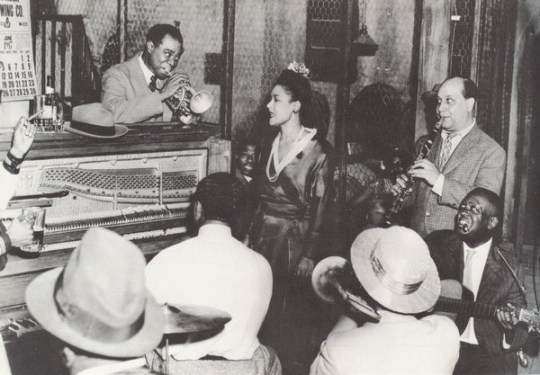
I watched this film on TCM as part of the aforementioned Black Experience on Film series with AAFCA.
As it was a month-long series in September, I probably should have mentioned it sooner, but the whole series was fantastic. The critics offered useful context for all of the films. Given that the films elicit mixed responses and have complicated roles in cultural and social history, it was very cool to see people debate and disagree on the films. It was valuable to witness even the disagreements that weren’t all that complicated and more about personal taste than politics. With New Orleans for example, one of the hosts liked the film and the other disliked it, though both held an appreciation for it. More civil disagreement about films, please and thanks.
I liked New Orleans and am disappointed that I hadn’t even heard about it before. Although, I do agree with critic/host Jamaal Finkley that it’s a disappointment that New Orleans doesn’t provide any insight into the personal trials of the Black characters.
It’s always a treat to see Arturo de Cordova, but that goes double when it’s an American film where his role isn’t informed by Latin/Mexican stereotypes. This is actually one the more refreshing aspects of the film. The Black characters lack interiority and their struggles are left out of the film, but Louis Armstrong’s and Billie Holiday’s characters are average people and don’t hew to stereotypes. It’s not exactly a victory for representation, but it’s still an improvement.
That said, the music is great and I wish there were more of it. It’s well established in the film that New Orleans’ problems largely come from badly-behaved white people, which I appreciate. (Is that too real?) Arturo de Cordova is great as the romantic lead of the film. I only wish Dorothy Patrick had the charisma to seem like a better match for him.
New Orleans is definitely worth checking out if the progress of Black representation in film is of interest to you or if you have a special interest in jazz or New Orleans.
Where to watch: It looks like Kino’s DVD release might be out of print, so libraries & video stores might be your best bet. OR, you can wait until TCM plays it again.
The Boy (2016)
22 January 2016 | 97min. | Color

Sooooo depending on how long you’ve been following the blog, you may or may not know that I love horror movies and ghost stories and whenever those things meet. When I first saw the trailers for The Boy ahead of its theatrical release, it did pique my interest. However, that’s mostly because they made me laugh. I am not someone who’s creeped out by dolls though. If you are, I suspect this film actually might be scary to you.
The Boy has a solid premise. At first it reminded me of the story “Baby Doll” by Larry LeClair from the radio show Nightfall. (”Baby Doll” is a better story, FYI, and creepier.) Unfortunately, the execution of The Boy’s story was disappointing. The film drags when it shouldn’t and the flow of the lead character warming to the doll felt stilted. The Boy’s big reveal ended up feeling a bit cheap as a consequence.
That said, I had fun watching it. I got some good laughs from Brahms’ ghostly antics and the middle part of the film is chock full of them.
The house from the film is so beautiful. I can’t believe it’s in Vancouver. Or that it’s a location for Little Women (1994)? I somehow didn’t recognize it.
Whether The Boy is worth a watch is debatable. If you like Haunted Doll stories, the execution and ending might be unsatisfying for you. Maybe if you like the odd modern horror film that can’t embrace its own camp, The Boy would be perfect for you?
Where to watch: It’s currently streaming on Netflix.
Street Scene (1931)
5 September 1931 | 80min. | B&W

This movie was a good old kick in the pants.
Street Scene an adaptation of a Pulitzer-Prize-winning stage play by Elmer Rice. It depicts the problems of New York City tenement residents and their relationships with one another. Though this is a pre-code film, I still imagine there would have been notable changes for censors. That said, the film is still very… mature. Additionally, I’ve seen suggestions that the film we know today is a re-edit of the film for post-code re-release. Hoo boy, what that source material must have been then.
One challenge a lot of filmmakers have when adapting stage plays to film is avoiding static staging–as if someone simply recorded the play. Street Scene doesn’t fear this and I think it works out. Almost all of the film takes place on the stoop of the tenement. The building facade is a truly impressive setup for filming. The camera work livens up the visuals with tracking shots and unexpected angles not commonly seen in early-sound films. (Unsurprisingly, Gregg Toland worked on the film!)
The acting is fantastic and, as someone who has spent the lion’s share of her life in cultural melting pots, the atmosphere the actors create is very authentic. Frankly, after living in Brooklyn for five years (four years ago), some neighborhoods still feel like this–only the voices are Puerto Rican and West Indian instead of European. It’s fascinating to see those veins of permanence in a city that’s changed as much as New York has.
The story primarily focuses on one family. The matriarch (Estelle Taylor) is bored with her unhappy marriage and takes up with the man who collects payment for milk delivery. The eldest child, Rose (Silvia Sydney), is pursued by seemingly every young, eligible man on the block and her not-so-young and not-so-eligible boss. The only one Rose shares feelings for is her downstairs neighbor, an unemployed student, Sam (William Collier, Jr.), who also happens to be Jewish. There is plenty of external resistance to their relationship for anti-semitic and/or financial reasons. Rose’s misgivings are a little more complicated. She feels trapped by the neighborhood and is wary to tie herself down to her current status at so young an age, regardless of how she feels about Sam. In the end, Rose’s mother’s fate cements her own. You can’t help but feel for both of them.
In case you haven’t already gathered this, the film calls for a content warning for anti-semitism and the use of anti-semitic slurs. [Note for clarification: the film is not anti-semitic, a few of the characters are.]
Street Scene takes social issues head on and is a pre-code through and through. It’s absolutely a top recommendation if you like pre-codes. It’s also worth watching if you’re into New York City history or have an interest in film adaptations of stage plays.
Where to watch: This one is pretty easy to see, but I haven’t sussed out the distribution rights or home video releases.
I also watched the film Sanatorium pod Klepsydrą / The Hourglass Sanatorium (1973). That left me with too many feelings to put in an amalgam post. Once I sort through how personal I want to get in discussing the film publicly, you can be sure it’ll get its own post up here.
Last Month’s Review
#Film Review#film blog#month in review#monthly roundup#brigsby bear#2010s#2017#comedy#perfect blue#satoshi kon#animation#animated movies#anime#giallo#horror#Horror Movies#horror film#suspense#1990s#1997#1998#new orleans#1940s#1947#Louis Armstrong#billie holiday#Arturo De Cordova#romance#2016#ghosts
10 notes
·
View notes
Text
Research Statement
Subliminal Perception
1. Ideation
Through my interest in the human psyche, I found myself looking at where exactly psychology meets design. When you start looking at how much matter we consume daily, it is astonishing how our brains handle this information dormantly. As a study of our unconscious, this is of interest, especially to design students in relation to an emotional response to images. The role of our unconscious plays a huge role in our exposure to advertising and therefore forms a change in our consumer choice. I started this research in 2018 and became intrigued by the complexity of the topic. The influence of subliminal priming1 in humans is an interesting phenomenon and its understanding is crucial as it can influence behaviour, choices, and actions.
Jon Carpenter’s 1989 film They Live (CARPENTER, 1989) is an accurate representation of our meduim lack of autonomy when it comes to advertising. Carpenter’s cult classic is an overtly political film. Everything about ‘They Live’ ties into a political process. The film is about a physical kind of consumerism that has overtaken the planet. In the context of They Live, it is an alien invasion. It elucidates hierarchy and power, pointing out the corruption of society through the lens of science fiction. Drones in the sky, political conspiracies, militarised police in the streets, economic inequality in every corner of society and media that seek to control our minds: the poignant message of They Live is more tangible in 2019 than ever. The film is an iconic representation of subliminal messages hidden in billboards and newspapers that order the human populace to be unquestioning consumers, this holds a potent message of the power of media and the unsettling ramifications of what consumerism means between the average person, the major corporate media and governmental powers that encourage it. Carpenter’s They Live will be paramount in forming a foundation of research for this essay.
2. Research & development
Subliminal perception is explained as images that flash too quickly for the conscious mind but nonetheless register unconsciously. It is said that several repetitions of such messages could affect a person's actions. While some admen2accepted the term when first introduced in the fifties, treating subliminal advertising as fact and discussing its potential, others thought it a joke, laughing at its ‘trivial’ nature. Experimentation in the field of subliminal perception can be traced back to the late 1800s; however, it was not until Fisher's studies in the 1950s (Fisher, 1954; Fisher, 1956), and the notorious movie theatre experiment conducted by market researcher James Vicary in 1957, that the phenomenon caught the interest of experimental psychologists as well as the general public. During the 1960s, many of these experiments were criticized for lacking correct methodology. The largest single complaint levelled at the subliminal advocates dealt with their inability to control the influence of partial cues3. After reading into the subject, emerging questions of mental autonomy have become apparent. Thomas Metzinger’s theories on this are particularly interesting, he believes it is simply impossible for us to have complete mental freedom due to our environment. “They cannot be inhibited, suspended, or terminated”(Metzinger, 2013).
The book Subliminal Seduction (KEY, 1974) shows various uses of subliminal messages as used by advertisers. “the many methods with which advertising is literally _____ your mind[...] after you finish this book, you’ll have no trouble filling in the missing word.” The book heightened concern on the topic at the time of its release. The novel brings up questions of uncertainty and guidelines within society. The major problem with regulating the use of subliminal technology, is that by definition, it is never consciously perceived by the individuals to which it is directed. The use of subliminal messages to influence behaviour without the knowledge of the intended recipients, can be considered, in a legal context, as an invasion of personal privacy. Goodkin and Phillips, in a 1981 review entitled The Subconscious Taken Captive: A Social, Ethical and Legal Analysis of Subliminal Communication Technology (Goodkin, 1981), point out that tort4 law has recognized and extended protection to autonomy and privacy rights in contexts that are analogous to subliminal communication (p. 1140). "People usually know when they have been physically injured, when their belongings have been stolen, or when a contractual obligation has not been honoured. It is more difficult to know when one's communications have been intercepted when one is being observed or followed, or when others are reading one's dossier. This absence of awareness is a serious problem in a legal system that relies primarily on complaints initiated by victims" (Gavison, 1980).
Although subliminal communication techniques have been under development for several decades, there are still no specific laws or regulations dealing with their use. The public outcry over the publication of Vance Packard’s bestseller, The Hidden Persuaders (Packard, 1958) prompted several legislative committees to address the issue. I found myself interested in extracts of this text with relation to my specific research theories. In them, Packard brings the many motivational research techniques of advertising and marketing to public attention. These various techniques allowed advertisers and marketers to delve more deeply into consumer psychology than what could be learned by asking people questions directly about their likes and dislikes. Packard examines the use of such things as rate of pupil dilation to monitor enthusiastic responses to TV commercials, scanning changes in voice pitch to study positive or negative reactions to products, and displays of brain wave activities that assess degree of arousal created by ad imagery. Although such physiological responses to external stimuli had been recognized in psychological research much earlier, it was this application to marketing that concerned Packard. Packard’s thesis was simple: We are being monitored, managed, and manipulated outside our conscious awareness by advertisers and marketers. His exposé was detailed, quoted evidence, and included telling chapter headings, for example, "The Psycho-Seduction of Children.” The American public already had a general fear of brainwashing, spying, and invasion of privacy. Packard's book further encouraged this.
I also read up on Neuromarketing5 and texts that refer to this. For example, a review of research, Subliminal advertising and the psychology of processing unconscious stimuli (Theus, 1994), outlines and reviews progress to date on research on the effects of subliminal stimulation on subject groups and potential applications to persuasive communications. Several areas of inspection covered in the literature include psychological, physiological, and behavioural (choice) responses, the last of which is of particular interest to advertising and marketing specialists. The text identifies several useful areas for continued research and experimentation, especially in areas of social marketing analysis.
3. Critique & explanation
August Bullock’s book The Secret Sales Pitch: An Overview of Subliminal Advertising (Bullock, 2004) is nearly 50 years of research on subliminal advertising. As a contrary to my populated research, the literature repeatedly shows that most effects are only obtained in highly artificial situations, and no research has shown an effect that changed attitudes or impacted purchasing behaviour.
By its very nature of being outside the realm of an individual's conscious state of awareness, it is unique among all forms of auditory and visual communication. To many people, the concept of subliminal perception is disturbing. Few individuals feel comfortable knowing that they are being influenced by information over which they have no conscious awareness. Whether the information is being presented intentionally, or whether it is simply the subconscious filtering of background 'noise', the process of subliminal perception exists without conscious awareness. The idea that it is impossible to exercise control over the perception of information that may be affecting attitudes, behaviours, and decisions, runs contrary to feelings of independence and individuality. Indeed, it is this lack of control that has fostered so much of the controversy and criticism surrounding the phenomenon of subliminal perception. The intentional presentation of subliminal information can be accomplished through the use of either: 1) Tachistoscopic6 methods that supply the message at speeds higher than an individual's level of conscious perception; or 2) The embedding of symbolic images in a print medium.
The major ethical problem regarding the use of subliminal stimuli to influence behaviour and attitudes is inherent in the nature of the phenomenon. When asked, "Do you think you have been influenced by a subliminal message today?" The general public would immediately respond negatively, with a degree of confidence. Unfortunately, there is no way to be sure. The experience is, quite simply, outside the realm of conscious awareness. The ultimate invasion of a person's privacy is the covert manipulation of his mind, the extent to which this can be considered 'good' or 'bad' depends upon the content and subsequent effect of the stimuli. It is not difficult to imagine stimuli that, if effective, could substantially contribute to the self-expressed values of any society. Few people would argue with a successful subliminal campaign that reduces theft, smoking, drunk driving, or drug abuse (Gratz, 1984). "Indeed, it would appear the technique of production and communication now in use could make our world virtually anything we desire - a place of happiness, fulfilment, and meaningful relationships" (Key, 1976). However, the ethical problem still remains, who would determine what constitutes a socially desirable message? Do we have autonomy of what we consume?
4. Action plan
Hoping to form a specific theory-based essay that communicates subliminal perception clearly. I would like to discuss in detail the normalisation of subliminal priming the mainstream media. Focusing on the dangers and hidden roles of the unconscious. Diving deeper into questioning if subliminal messages really do exert diverse influences on our thoughts and our behaviour. Through expanding my research into subliminal priming in the design industry, I hope to continue to research the best and most relevant texts/work and forming interesting ideologies on the topic.
I will also continue to;
· Assess the degree of subliminal influence/ Consider if behaviour changes using subliminal stimuli
· Review the ethical issues involved in the implementation and development of subliminal technology
· Discuss the public's perceptions of subliminal advertising
· Synthesize present administrative and case law to determine the legal status of subliminal technology
· Develop a profile for the future use of subliminal perception.
Subscripts:
Behaviour outside of awareness.
A person who works in advertising.
Partial cueing refers to the possibility of influencing a sub jects response through the unintentional communication of supraliminal information on the part of the experimenters or the experimental process itself.
A tort, in common law jurisdictions, is a civil wrong that causes a claimant to suffer loss or harm resulting in legal liability for the person who commits the tortious act.
Neuromarketing is a new field of marketing which uses medical technologies such as functional Magnetic Resonance Imaging (fMRI) to study the brain's responses to marketing stimuli.
A Tachistoscope (Tachistoscopic) is a device that displays an image for a specific amount of time. It can be used to increase recognition speed, to show something too fast to be consciously recognized, or to test which elements of an image are memorable.
5. List of References(Harvard Format)
Bullock, A. (2004) The Secret Sales Pitch: An Overview of Subliminal Advertising. Norwich Publishers.
'They live' (1989) Directed by CARPENTER, J. United States: (97m)
Fisher, C. (1954) Dreams and Perception. Journal of Psychoanalytic Association, 2, 389-445.
Fisher, C. (1956) Dreams, Images and Perception: A study of unconscious- preconscious relationships. Journal of American Pyschoanalytic Association, 4, 5-48.
Gavison (1980) "Privacy and the Limits of Law.". Yale Law Journal, 89, pp. 449-450.
Goodkin, O., and Phillips, Maureen Ann (1981) The Subconscious Taken Captive: A Social, Ethical and Legal Analysis of Subliminal Communication Technology. Southern California Law Review, 54, 1077-1140.
Gratz, J.E. (1984) The Ethics of Subliminal Communication. Journal of Business Ethics, 3 no. 3, 181-184.
KEY, W.B. (1974) Subliminal seduction: ad media's manipulation of a not so innocent America. New American Library.
Key, W.B. (1976) Media sexploitation. Prentice-Hall.
Metzinger, T. (2013) The myth of cognitive agency: subpersonal thinking as a cyclically recurring loss of mental autonomy.Frontiers in Psychology, 4 (931).
Packard, V.O. (1958) The Hidden Persuaders. Pocket Books.
Theus, K.T. (1994) Subliminal advertising and the psychology of processing unconscious stimuli: A review of research. Psychology & Marketing, 11 (3), 271-290.
0 notes